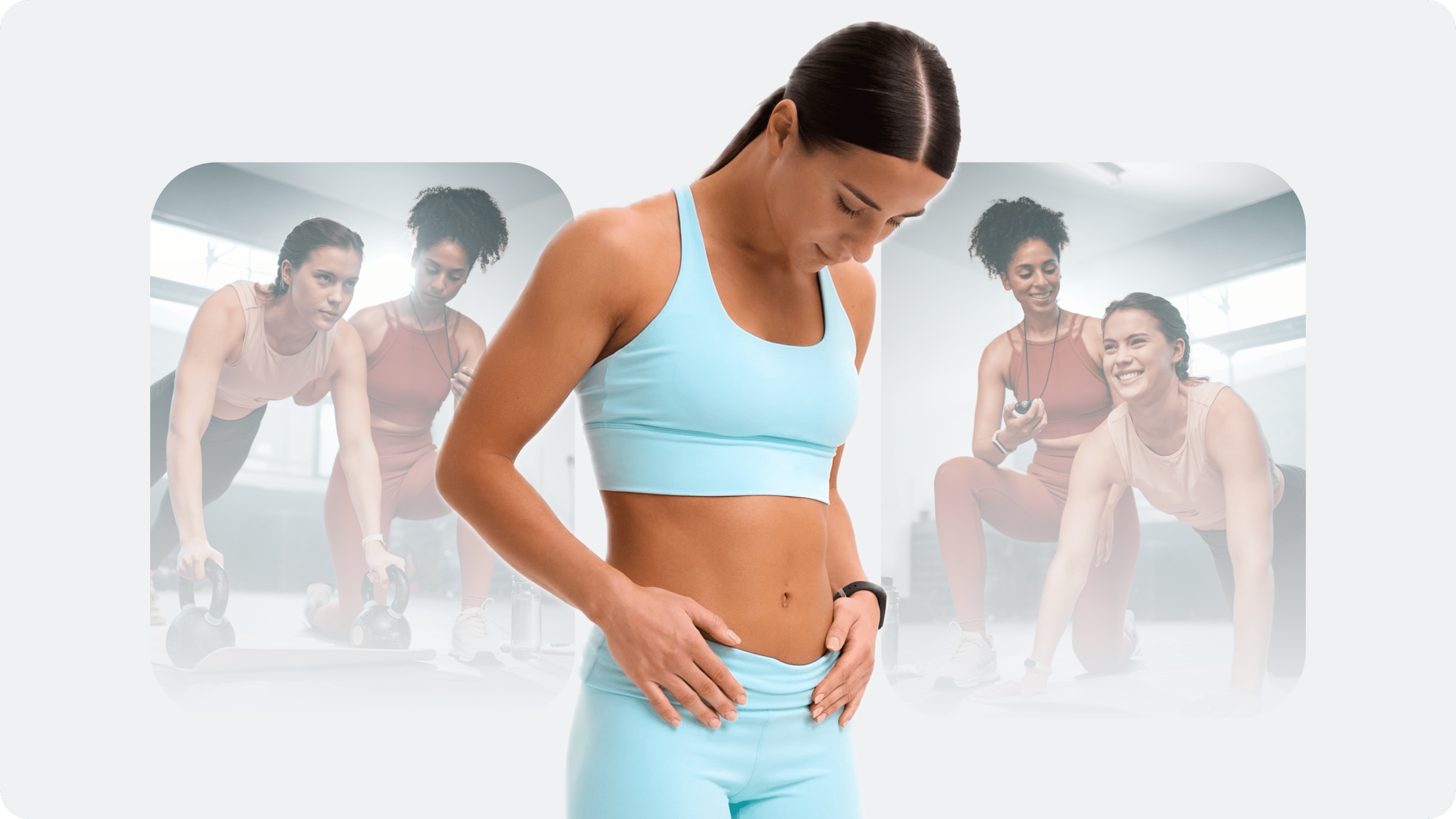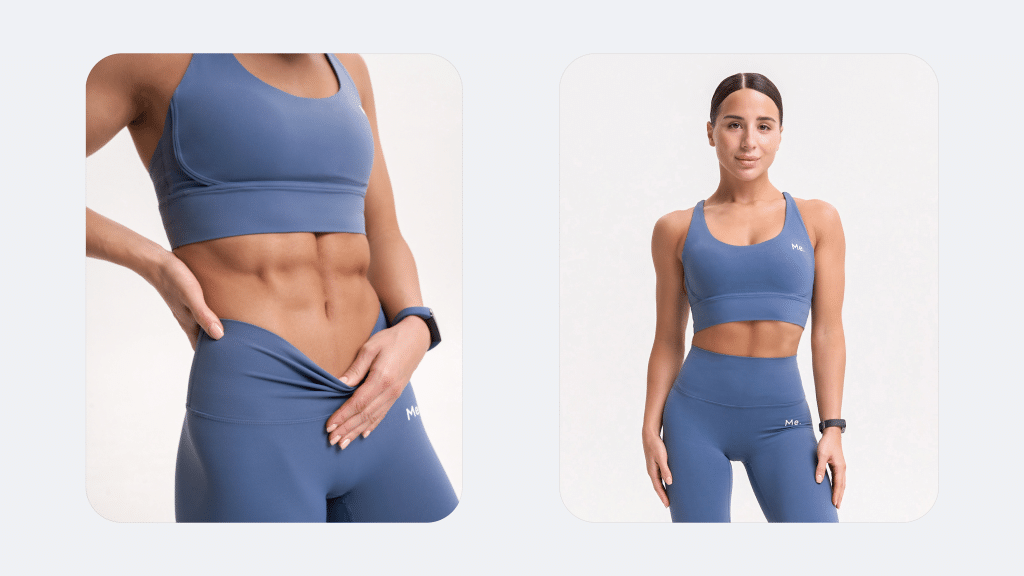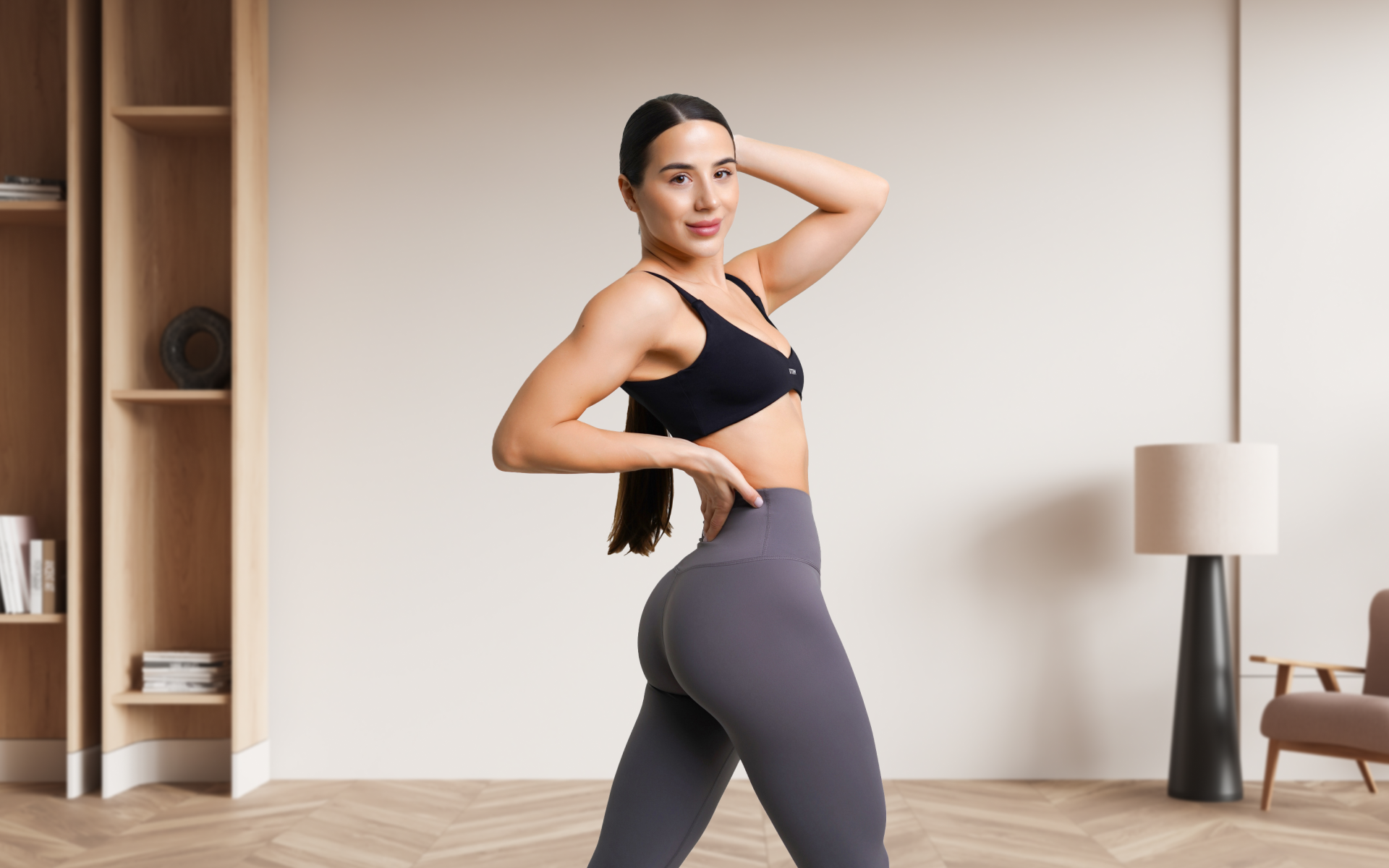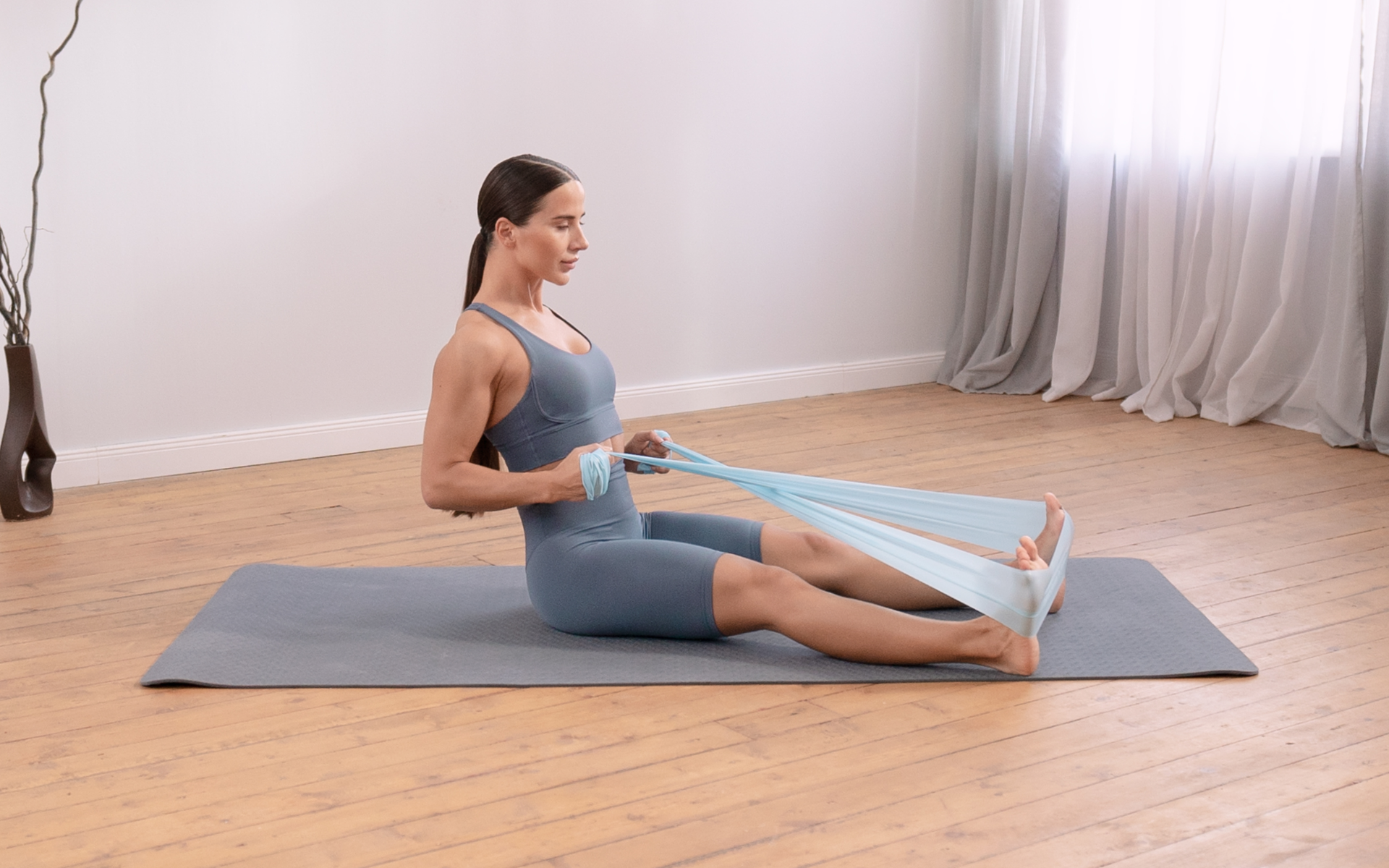Home workouts… They’re convenient, cost-effective, and for many, the best bet at maintaining fitness. And no, you don’t need a fully-decked out home gym to get started. At most, all you need is a pull-up bar and some open space.
Master the fundamentals of calisthenics—bodyweight exercises that build strength, endurance, and flexibility—and you’re good to go.
To help you embark on this fitness journey, here’s how to get started with calisthenics for beginners.
We’ll cover the essential exercises to begin with, tips for maintaining form, and finally, a calisthenics workout plan to guide your progress.
Is Calisthenics Hard for Beginners?
Calisthenics may seem overwhelming at first, especially if you’re new to fitness. You may find yourself struggling with certain exercises, but don’t let that discourage you. Everyone has to start somewhere, and with calisthenics, it’s all about progress over perfection.
Here are some reasons why you may struggle to get started with calisthenics at home:
Lack of strength and muscle endurance: Calisthenics involves using your own bodyweight for resistance (6), which can be challenging if you’re not used to it. But with consistent practice, your muscles will adapt and grow stronger.
Poor flexibility: Many calisthenic exercises require a good range of motion, which may be difficult for beginners who have tight muscles. Incorporating stretching and mobility exercises into your routine can help improve flexibility over time (8).
Mental barriers: Calisthenics can also be mentally challenging, especially when attempting more advanced moves.
Learning curve: Unlike traditional gym equipment, calisthenics exercises may require a bit of technique to perform correctly. Don’t be discouraged if you struggle at first; with practice and proper form, you’ll improve.
Lack of guidance: It can be overwhelming to figure out where to start and what exercises to do. That’s why we’ve put together this guide to help you get started with a basic calisthenics routine.
How Do I Start Basic Calisthenics?
To get started with calisthenics; understand the basic principles, familiarize yourself with the fundamental moves, create your workout split, add necessary equipment, and commit to consistency.
Understanding the Principles
Before jumping into any exercise, it’s essential to understand the principles of calisthenics. These include:
- No equipment required: You won’t need any fancy equipment or gym membership to do calisthenics at home (5). You may choose to add equipment such as resistance bands or a pull-up bar, but it’s not necessary at all.
- Full Range of Motion: Performing exercises through a full range of motion helps improve strength and mobility (2).
- Form over Reps: It’s crucial to maintain proper form during exercises, even if it means doing fewer reps (9). This ensures that you’re targeting the correct muscle groups and reduces the risk of injury .
- Progressive Overload: This means gradually increasing the difficulty of your exercises over time (4). It could be by adding more repetitions, sets or modifying the exercise in some way. Or increasing resistance, at home that could look like a backpack of books or carrying filled water bottles.
- Rest and Recovery: It’s essential to give your muscles time to rest and recover between workouts. This allows them to grow stronger and prevent overtraining (3) (10).
- Consistency: Consistently showing up for your workouts is key to seeing progress in calisthenics.
Learn more about the fundamentals of bodyweight training and its benefits in our previous post – Calisthenics Basics.
The Fundamental Moves
There are seven fundamental calisthenics moves that you should start with:
- Push-ups: This exercise primarily targets the chest, shoulders, and triceps.
- Squats: A full-body exercise that targets the legs, glutes, and core.
- Pull-ups: One of the most challenging calisthenic exercises that primarily targets the back and biceps.
- Dips: A compound exercise that targets the triceps, chest, and shoulders.
- Planks: A core stability exercise that also works the arms, shoulders, and glutes.
- Lunges: This exercise targets the legs, glutes, hips, and core.
- Crunches: A classic core exercise that targets the abdominal muscles.
If you struggle to even flirt with the idea of giving up your favorite foods or working out till your legs give way – BetterMe app is here to breathe a fresh perspective into the way you view the weight loss process! Check out the app and experience the fun side of fitness and dieting with BetterMe!
Here are direct, concise, yet detailed step by step guides on how to perform each exercise correctly (we’ve included rep and set ranges as well):
Push-ups
- Start in a high plank position with your hands shoulder-width apart and arms extended.
- Engage your core, squeeze your glutes, and keep your body in one straight line from head to heels.
- Slowly lower yourself until your chest almost touches the floor, keeping your elbows close to your sides.
- Push back up to the starting position, keeping your body straight throughout the movement.
- Aim for 3 sets of 8-12 reps.
Squats
- Stand with your feet shoulder-width apart and toes slightly turned out.
- Engage your core and keep your head and chest up as you lower yourself by pushing your hips back and bending your knees.
- Stop when your thighs are parallel to the ground, then push through your heels to stand back up.
- Aim for 3 sets of 10-15 reps.
Pull-ups
- Grab a pull-up bar with an overhand grip, hands wider than shoulder-width apart.
- Engage your core and squeeze your glutes as you pull yourself up until your chin is above the bar.
- Lower yourself back down with control, keeping your body straight throughout the movement.
- If you’re unable to do a full pull-up, start with assisted variations using resistance bands or a chair. Or jump to give yourself a boost to the top of the pull up, then slowly lower yourself down, fighting gravity the entire time.
- Aim for 3 sets of 6-10 reps.
Dips
- Place your hands on parallel bars or a sturdy surface behind you with your arms extended.
- Lower yourself slowly by bending your elbows until they form 90-degree angles.
- Push back up to the starting position, keeping your body upright throughout the movement.
- If you’re unable to do full dips, start with assisted variations using a resistance band or chair.
- Aim for 3 sets of 8-12 reps.
Planks
- Start in a high plank position with your hands shoulder-width apart and arms extended.
- Engage your core and keep your body in one straight line from head to heels.
- Hold this position for 30 seconds to 1 minute, gradually increasing the time as you get stronger.
- Aim for 3 sets.
Lunges
- Stand with your feet hip-width apart and arms by your sides.
- Step forward with one leg, lowering your body until both knees form 90-degree angles.
- Push back up to the starting position and repeat on the other side.
- Aim for 3 sets of 10-12 reps on each leg.
Crunches
- Lie on your back with your knees bent and feet flat on the ground.
- Place your hands behind your head or cross them over your chest.
- Engage your core and lift your shoulder blades off the ground, bringing your chest towards your knees.
- Slowly lower back down to the starting position.
- Aim for 3 sets of 15-20 reps.
Read more: The Simplest Lower Back Calisthenics Guide for Beginners
Creating Your Workout Split
A workout split is a schedule that dictates which muscle groups you’ll target each day. Here’s an example of a calisthenics workout split for beginners:
- Day 1: Push exercises (Push-ups, Dips)
- Day 2: Rest day
- Day 3: Legs and Core (Squats, Lunges, Planks)
- Day 4: Rest day
- Day 5: Pull exercises (Pull-ups)
- Day 6: Rest day
- Day 7: Full-body workout (Combination of all fundamental moves)
When you’re just learning how to get started with calisthenics without equipment, you may opt for a full-body workout every other day instead. As you progress and get stronger, you can start targeting specific muscle groups on separate days.
Committing To Your Calisthenics Workout
Getting started may be simpler than continually showing up for workouts. To stay consistent with your calisthenics routine and reach your goals, try these tips:
- Schedule your workouts: Plan specific days and times for your workouts each week.
- Have a workout buddy: Having a friend to hold you accountable can make it more enjoyable and motivating.
- Track progress: Keep track of the exercises you’re doing, reps and sets, and any progress you make.
- Mix it up: Don’t be afraid to add in new exercises or variations to keep your workouts challenging and prevent boredom.
- Listen to your body: Rest when needed, and don’t push yourself too hard. Remember that rest and recovery are crucial for progress (10).
How Long Should a Beginner Calisthenics Workout Be?
A beginner calisthenics workout should last anywhere from 30-60 minutes, depending on your fitness level and the number of exercises you’re doing. Start with shorter workouts and gradually increase the duration as you get stronger and more comfortable with the movements.
Focus more on quality rather than quantity, making sure to maintain proper form and range of motion in each exercise.
Can a 14 Year Old Start Calisthenics?
14 is as good an age as any to start calisthenics training. It’s always a good idea to consult with a doctor before starting any new exercise routine, but as long as you are in good health and take precautions to avoid injury, there shouldn’t be any issues with starting calisthenics at 14 years of age.
Whether you’re a workout beast or just a beginner making your first foray into the world of fitness and dieting – BetterMe has a lot to offer to both newbies and experts! Install the app and experience the versatility first-hand!
FAQs
How Do I Start Calisthenics From Zero?
- Set goals: Determine what you want to achieve through calisthenics and set realistic goals for yourself.
- Educate yourself: Learn about proper form, techniques, and different exercises.
- Start with the basics: Master fundamental moves like push-ups, squats, and planks before moving on to more advanced exercises.
- Progress gradually: As you get stronger, increase the difficulty of your exercises by adding variations or resistance.
- Follow a workout plan: Create or find a workout plan that targets different muscle groups on specific days and follow it consistently.
- Don’t forget to rest: Rest is crucial for progress and injury prevention, so make sure to schedule in rest days.
- Stay consistent: Consistency is key in achieving your fitness goals. Make sure to show up for workouts regularly and stay committed.
Can I Start Calisthenics At 30?
30 is as good an age as any to start calisthenics, and it’s never too late to begin your fitness journey. Research shows that calisthenics is a great way to build strength and improve physical function in older adults (1). Make sure to start with proper form and progress gradually to avoid injury.
In a previous blog: Calisthenics for Beginners at Home, we discussed how to reap the benefits of bodyweight training even as you start out.
Is Calisthenics Worth It?
Yes, calisthenics is definitely worth it. It’s a great way to improve strength, flexibility, and overall fitness without the need for equipment or a gym membership (7). Plus, it can be easily adapted to any fitness level and offers endless possibilities for progress and growth.
Just make sure to stay consistent and dedicated to your workouts. Overall, calisthenics can be a fun and effective way to stay fit and healthy.
How Many Push-Ups a Day?
If you’re just starting, aim for 10-15 push-ups per set for 3-4 sets and gradually increase the number as you get stronger. For more advanced individuals, you can aim for 50-100 push-ups a day spread out over multiple sets. Be careful not to overdo it and listen to your body for any signs of fatigue or injury.
The Bottom Line
Calisthenics is a highly effective way to build strength, muscle, and improve overall fitness without any equipment. By incorporating the fundamental exercises mentioned above into your routine and following a consistent workout split, you can achieve your calisthenic goals and continue to progress as you get stronger.
DISCLAIMER:
This article is intended for general informational purposes only and does not serve to address individual circumstances. It is not a substitute for professional advice or help and should not be relied on for making any kind of decision-making. Any action taken as a direct or indirect result of the information in this article is entirely at your own risk and is your sole responsibility.
BetterMe, its content staff, and its medical advisors accept no responsibility for inaccuracies, errors, misstatements, inconsistencies, or omissions and specifically disclaim any liability, loss or risk, personal, professional or otherwise, which may be incurred as a consequence, directly or indirectly, of the use and/or application of any content.
You should always seek the advice of your physician or other qualified health provider with any questions you may have regarding a medical condition or your specific situation. Never disregard professional medical advice or delay seeking it because of BetterMe content. If you suspect or think you may have a medical emergency, call your doctor.
SOURCES
- Effect of resistance training using bodyweight in the elderly: Comparison of resistance exercise movement between slow and normal speed movement (2015, pubmed.ncbi.nlm.nih.gov)
- Effects of range of motion on resistance training adaptations: A systematic review and meta‐analysis (2021, onlinelibrary.wiley.com)
- Overtraining Syndrome (2012, ncbi.nlm.nih.gov)
- Progressive overload without progressing load? The effects of load or repetition progression on muscular adaptations (2022, ncbi.nlm.nih.gov)
- The advantages of body-weight exercise (2021, health.harvard.edu)
- The effects of a calisthenics training intervention on posture, strength and body composition (2017, researchgate.net)
- The Impact Of Ten Weeks Of Bodyweight Training On The Level Of Physical Fitness And Selected Parameters Of Body Composition In Women Aged 21-23 Years (2015, researchgate.net) j
- The importance of stretching (2024, health.harvard.edu)
- Weight training: Do’s and don’ts of proper technique (2022, mayoclinic.org)
- Why Rest Days Are Important for Muscle Building (n.d., blog.nasm.org)











